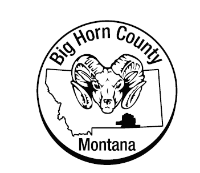
ABULANCE ZONES FOR A LOCAL COUNTY
USING NETWORK ANALYSIS TO DEVELOP ACCURATE AMBULANCE RESPONSE AREAS
BACKGROUND
One application of Spatial Analytics is Network Analysis. Network Analysis can be used in the creation of ambulance boundaries, which are used to determine the areas that ambulances are responsible for responding to. These boundaries are typically defined by factors such as population density, geographic features, and the location of hospitals and other healthcare facilities.
In my local jurisdiction there are three ambulance stations that are responsible for the whole county. Having response zones backed up by data is very beneficial for the community's needs and adds potential capabilities. The app is aimed towards stakeholders with a general knowledge of the area and with some experience in web applications.
INTRODUCTION
The data layers used for this project are three layers. First there are the structure address points so it is known which ambulance zone a parcel would belong to. Then there are the ambulance zone layers that were developed using a Network Analysis. The third layer is polygon areas representing ZIP codes that have attributes from emPOWER Data from the U.S. Department of Health and Human Services. This data depicts de-identifiable information that relates to Medicare claims that can help a jurisdiction in disaster planning.
Model Builder was used in this project to clean up the emPOWER data.

ModelBuilder workflow for emPOWER Data.
With this project I wanted to create an application that would show the ambulance zones that were a result from a Network Analysis. I also wanted this app to have data available that would better help the ambulance base with supplies and resources.
The Network Analysis that was used was the Service Area option. I developed polygons based on rural driving time.

DATA
For the Address Structure layer, I used data that is maintained by the local county. This is the current 911 address data. I used Model Builder to join this data so that there was a field that would give which ambulance zone for the specific feature.
The ambulance zones were produced from the Network Analysis using Service Area to generate drive-time polygons. The result was a bit of messy polygons that I had to manually clean up. The final result is below.
The emPOWER Data was taken from US Department of Health and Human Services. I cleaned this data up using the Model Builder workflow pictured above. The result was ZIP Code boundaries that had useful attribute data to help the ambulance bases with resources and supplies.
DATABASE SCHEMA
The data for this project is stored in a file geodatabase that is connected to an ArcGIS Pro project specifically for the Ambulance Zone Project.
ANALYSIS WORKFLOW
Network Analysis - With this workflow I first decided to use Service Area. For Mode I used Rural Driving Time. For Direction I used Away From Facilities and for cutoffs I used 120 minutes. This was strictly for polygon building. By giving that much time it allowed me to see which polygons covered the whole county. My imported facilities were the ambulance staging areas.
With cleaning up the emPOWER Data from HHS I used the Select tool to select ZIP Codes in Big Horn County that I pulled from Living Atlas. These Zip Codes were developed through partnerships with ESRI and Tom Tom. I then used the Join Field tool so there was spatial data attributed to the emPOWER Data.
I added a spatial join for my Structure Points that created a field in the data showing which ambulance barn was associated with that structure address point.
DATA OUTPUT
The results from this project produced ambulance zones that were backed by drive-time data, ZIP Code boundaries that had data to help those ambulance boundaries prepare for emergencies, and address structure points that were able to show which ambulance zone they were associated with. This could help make decisions for resource allocation, project analysis for hazard mitigation, and help with recovery efforts after an incident or disaster.
VISUALIZATION OF OUTPUT
The web map above shows the data that was a result of the analysis.
The Web Application above showcases the ambulance areas along with available emPOWER Data.
REFERENCES
- HHS emPOWER Program - https://empowerprogram.hhs.gov/de-identified-dataset.html
- USA ZIP Code Boundaries - https://services.arcgis.com/P3ePLMYs2RVChkJx/arcgis/rest/services/USA_ZIP_Code_Areas_anaylsis/FeatureServer
- Story Map Resources - https://www.esri.com/en-us/arcgis/products/arcgis-storymaps/resources
- An overview of the Network Analyst toolbox - https://pro.arcgis.com/en/pro-app/latest/tool-reference/network-analyst/an-overview-of-the-network-analyst-toolbox.htm
- Make Service Area Analysis Layer - https://pro.arcgis.com/en/pro-app/latest/tool-reference/network-analyst/make-service-area-analysis-layer.htm
- ArcGIS Pro Create network dataset: Service area network analysis - https://www.youtube.com/watch?v=Qu5YcXmIpDs
- Site Structure Address Points maintained by Big Horn County GIS
- Big Horn County Ambulance - https://www.bighorncountymt.gov/159/Ambulance
- Article: Rural Emergency Medical Services (EMS) and Trauma - https://www.ruralhealthinfo.org/topics/emergency-medical-services
- U.S. Department of Health and Human Services - https://www.hhs.gov/